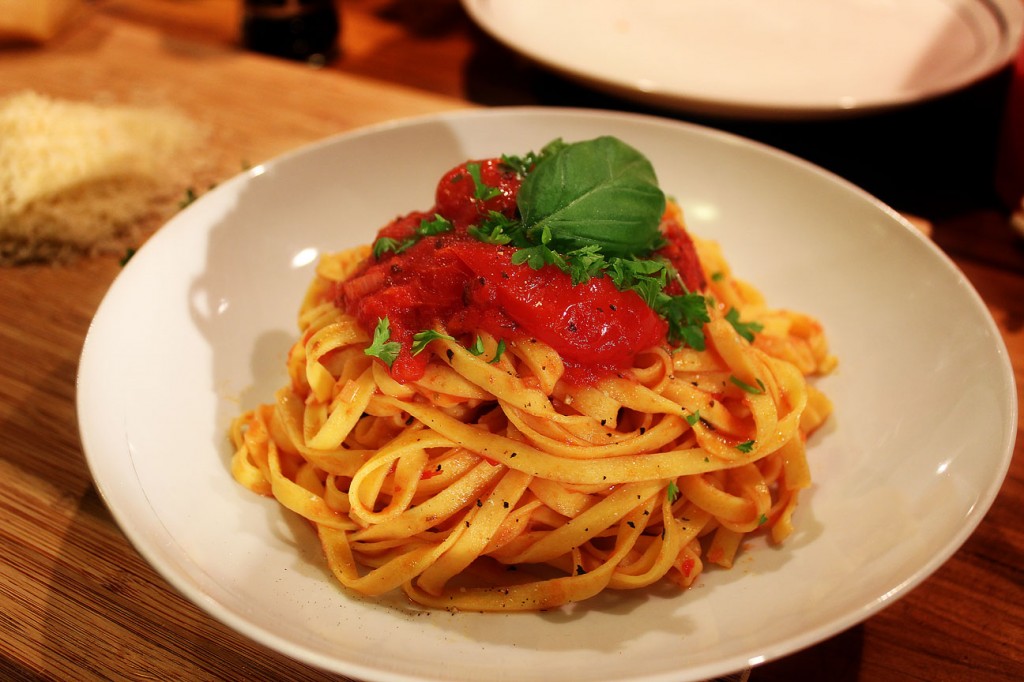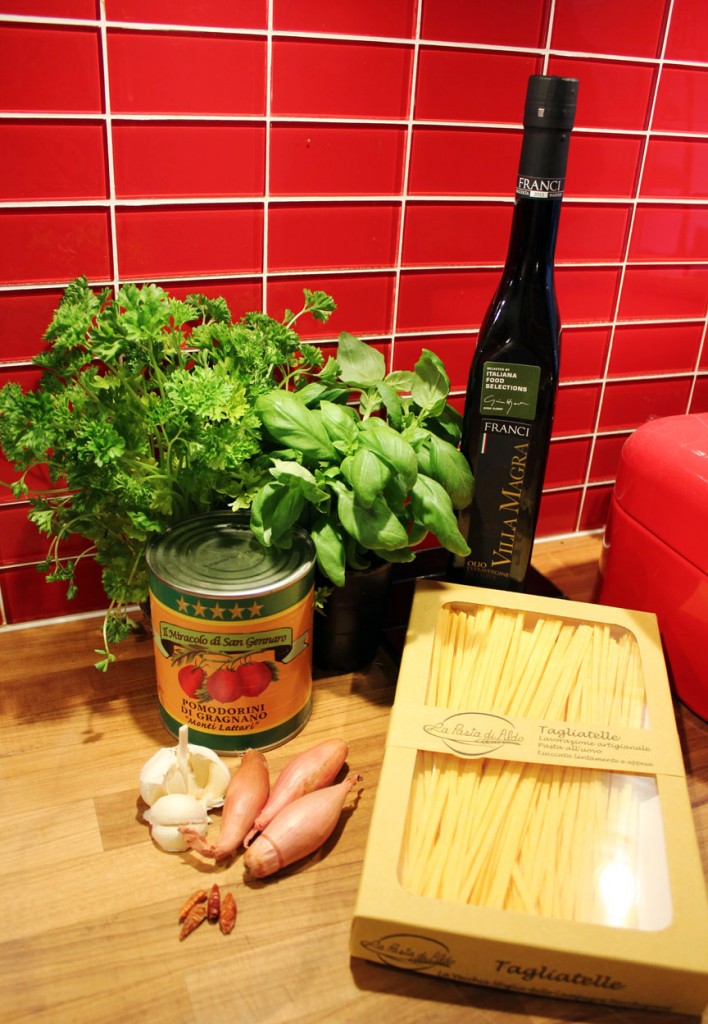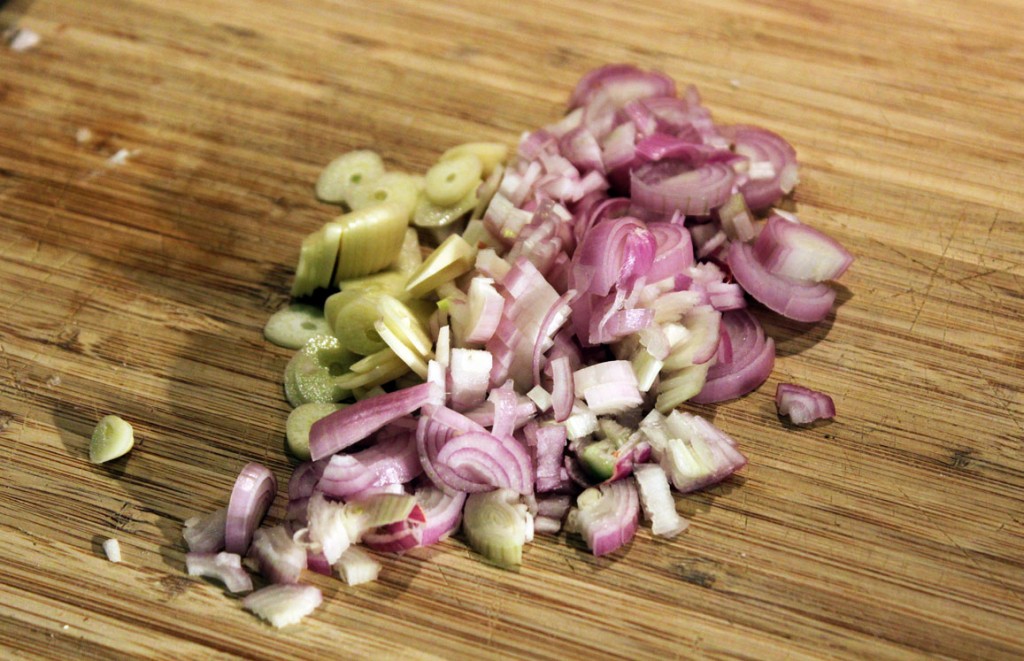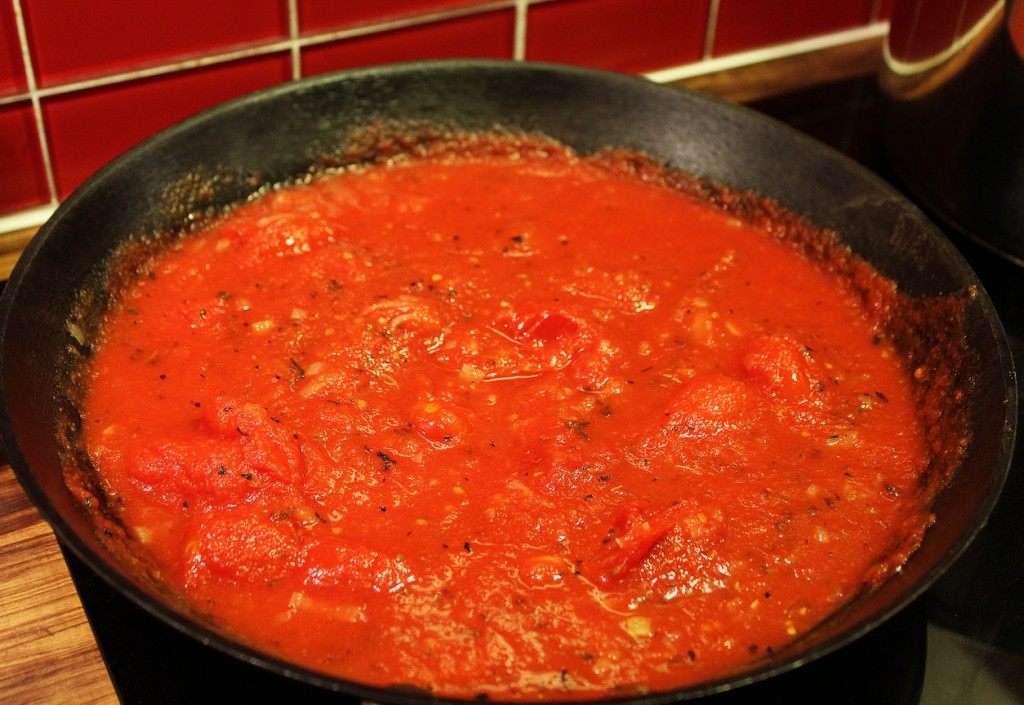Minchia che pasta al pomodoro
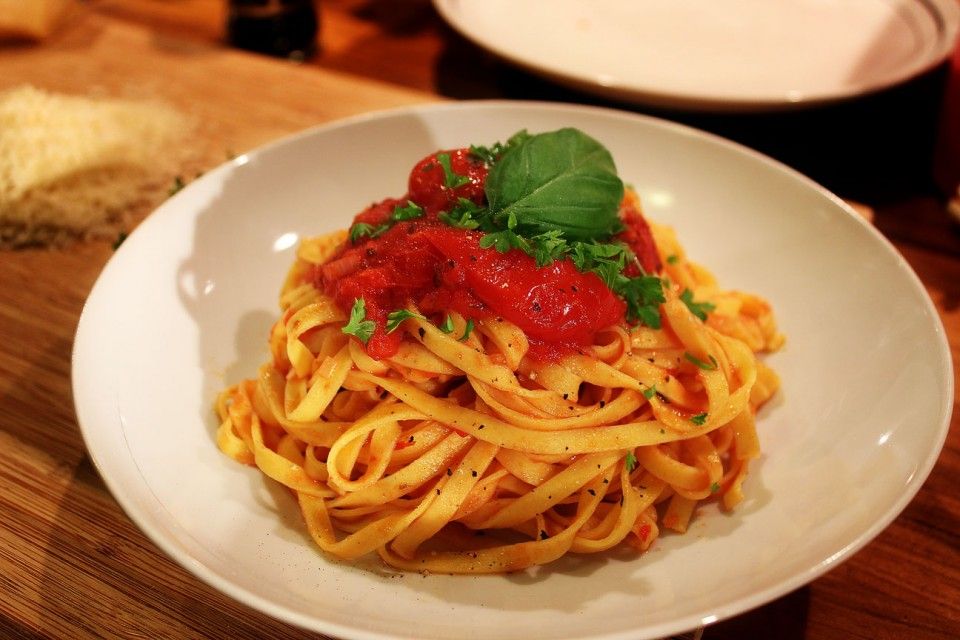
I love all kind of food. Sitting in a restaurant, being served “molecularly cooked” creations, that took days to assemble, is an amazing experience. I like cooking on low heat, slowly, for several days, getting the most flavorsome and tender steaks imaginable. But I also like the simple stuff. The best ingredients, carefully balanced flavors, and simplicity. Like pasta with tomato sauce, and freshly grated parmesan cheese on top. This is my simply approach to making an excellent tomato sauce. Before you criticize me for using dried herbs instead of fresh ones, you should really read to the very end. Just because something is fresh, doesn’t mean it’s automatically better. Fresh pasta, for example, is mistakingly chosen by some due the belief that fresh pasta is always better. There are tons of “fresh pastas” out there, that are far inferior to dried ones. Let me quote Gourmet.com:
“Unfortunately, food snobs have given fresh pasta a superiority complex, but no way is it better than dried. It’s simply that it’s made differently and tastes differently. In general, most fresh pastas include whole eggs or yolks, while most dried pastas are formed from just durum (meaning hard) wheat and water.
That said, there are plenty of exceptions: Fresh orecchiette is made with semolina (a form of durum wheat) and water—but no eggs. Conversely, some egg pastas are dried and sold alongside the durum wheat–and-water ones in the pasta aisle.”
I’ll be using a dried pasta containing egg yolk. It has been pressed through copper molds, rather than the modern plastic ones. The result is a more ruff texture, giving the pasta a better ability of keeping sauce stuck to it. I’ll be using the very best ingredients. It’s important that they they all stand well by themselves. A sauce like this will never be better than its parts.
Yes, I’m putting oregano into the sauce, despite conservative Italians wanting to shut down the page due to it. And yes, I put oil in the water. Not because of any risk of pasta sticking to each other, but because of the foam. A couple of drops of oil in the water, prevents it from foaming and spilling over the edge. That way, you can boil viciously, which is exactly what should be the case with pasta.
Here is the recipe for 2 plates of pasta with tomato sauce.
Time it takes:
- 3 minutes to peel and chop the shallots and the garlic, and to incorporate everything in a pan.
- 45 minutes to lay back and watch the sauce simmer, and to cook the pasta.
- 2 minute to serve
Ingredients for a pasta with tomato sauce dish:
- 240 g of pasta
- 500 g of pealed tomatoes in their own juices
- 25 g of sugar (2 tbsp) or to taste, depending on how acidic the sauce is.
- 3 shallots
- 3 garlic cloves
- 2 tbsp / 5 g of dried basil
- 1 tbsp / 2,5 g of dried oregano
- Peperoncino to taste
- 4 fresh basil leaves
- A pinch of parsley
- A generous amount of olive oil
- Parmesan cheese
- A pinch of salt
Instructions:
- Peal and chop the shallots and the garlic.
- Pour a generous amount of extra virgin olive oil into a pan, set on medium heat. Put in the chopped shallot, garlic and the dried basil and oregano.* Let the herbs, shallots and garlic sweat. Be careful now to give it too much color, we don’t want the garlic to taste “roasted”. Or even worse, burned!
- Add the peeled tomatoes from a can. Buy the high quality stuff. Caned food can be amazing.
- Half a peperoncino is enough to get some spiciness in there. But hey, feel free to put more of that in there if it suits your taste buds.
- Taste. Add sugar if the sauce is too acidic. I like the sweetness tomatoes have to offer, but sometimes they need a little help.
- Cook for 45 minutes. Now all won’t agree with this. There are people claiming that tomato sauce for pasta, should be “lite”. I, however, like the concentrated flavor of the tomatoes, the herbs and garlic. Therefore, I let it cook. You should to.
- Boil your pasta in water. Don’t do the same mistake many others do. Make sure to have a lot of water, a lot of salt in it, and make sure not to boil the pasta for too long. If it says 6-8 minutes on the package, cook it for 6.
- Mix the pasta with some of the sauce. Then put some more sauce on the top. And you have it. Pasta with tomato sauce, or “pasta al pomodoro”. It’s beautiful. Sprinkle with olive oil, some fresh parsley and a piece of basil (mostly for the looks).
Notes
* Now, why would I want dried stuff when I have fresh leaves right in front of me? Because it tastes better in this case. You see, basil is not very heat-resistant. It is advised that whenever you use it in a dish, you incorporate it at the very end. But even then, I don’t get out enough flavors from it. I found dried basil and oregano to work great when cooking them from the very beginning. They infuse the liquids, instead of just being a green leave in a finished dish (like the fresh pretty much becomes).

